Loibl South
In 1943, two satellite camps were established subordinated Mauthausen at the Loibl Pass (Ljubelj) on the Austrian-Slovenian border. One camp was located on the south side and called Loibl south and was set up in June. The second was located on the north side and was called Loibl north and was set up a few months later. The camps lay at an altitude of about 1000 meters. It was thus a harsh environment and a transfer there was considered by both prisoners and guards as a form of punishment. The first 330 prisoners to arrive at the southern camp in June were French political prisoners from Mauthausen. Loibl South was the only camp established on Slovenian soil. The purpose of the camps was to use the prisoners as slave workers for a tunnel construction through the mountain (Loibl pass). Previously, the transports had gone over the mountain, but through the tunnel construction, the transports would be more efficient. Lack of food, lack of medicine, poorly housings, slave labor, harsh climate and never knowing when guards will beat you made life in the camp miserable. In December 1943, the 1500 meters tunnel was finished.
Exactly how many people died from work or other causes cannot be determined. The prisoners who were no longer considered able to work were sent back to Mauthausen and most likely murdered for being unproductive. But about 40 prisoners were murdered in the camps and SS set up two primitive crematoria, one at each camp, to cremate dead prisoners. The area around the Loibl pass was full of partisans and about 30 prisoners managed to escape and join the partisans. Due to increased partisan activity in the area the northern camp was gradually liquidated in mid-April 1945 and the prisoners were evacuated to the southern camp. About 200 prisoners were also transferred back to Mauthausen. In connection with the German army’s retreat from Slovenia via the Loibl pass in May 1945, the southern camp were also evacuated through the tunnel. These prisoners were soon liberated by the Partisans.
Current status: Demolished with museum (2011).
Location: 46°25'49.1" N 14°16'08.2" E
Get there: Car.
Follow up in books: Kogon, Eugen: The Theory and Practice of Hell: The German Concentration Camps and the System Behind Them (2006).
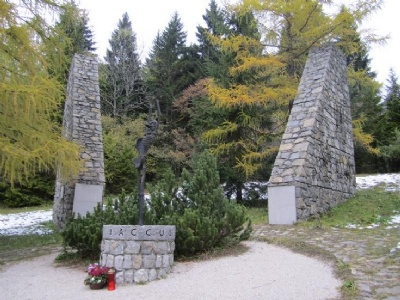

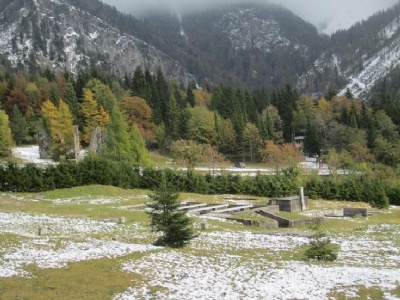
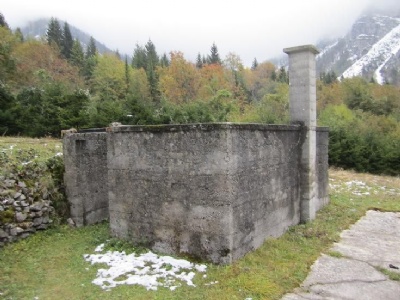
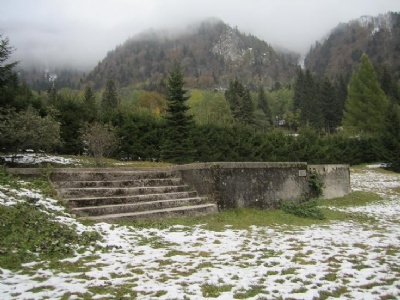
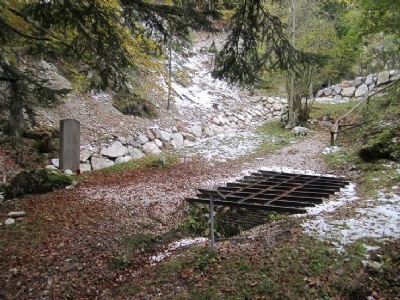
The Nazis were unable to destroy the camps and therefore intact when liberated. But already in June 1945 the camps began to be dismantled because the material was needed elsewhere in the post-war ravaged Europe. The passage through the mountain remained closed until 1950 and the preservation of the two camps took different forms. On the Slovenian (jugoslavic) side a memorial park was established in 1954 while the camp on the Austrian side fell into disrepair. One explanation for this could be that the southern camp was the only one within Slovenia’s borders. In Austria, there were other camps as well, especially the much larger, more famous and better preserved Mauthausen.
At Loibl south there are foundations and ruins in the former camp area. At a nearby restaurant there is a small museum that can be visited if the tourist office in Trzic is contacted in advance. Although the documentation of the camp is good, the knowledge of the camp is less. According to the tourist office in Trzic, few people in Slovenia know about the camp. This is certainly linked to the fact that the camp never became or is a symbol of the suffering of the Slovenian people during Second World War. Most prisoners came from other places unrelated to Slovenia (Yugoslavia).
The place is despite its macabre history very beautiful with great scenery and surrounded by majestic mountains. Especially in autumn when the colours are at their sharpest and the first snow has fallen. The gray monuments and ruins are just right down without being decayed and the moss on the monuments and ruins even make these beautiful in combination with the rest. There is also a peace of mind on the site, which together with the scenery makes it really atmospheric to walk around the area.